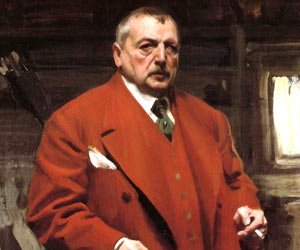
Some biographers have maintained that Zorn’s personality was somewhat loud and garish and it is that personal trait which can often be seen in the animated, broad sweeping distinctive brushstrokes of his works. By the beginning of the 1880s Zorn had acquired a self-assured style, and with his popular artwork, he was on an artistic journey. As in so many instances in the early life of aspiring artists, who were being academically trained, Zorn’s view on how art should be taught ended with him having disagreements with the director of the Royal Academy of Fine Art regarding the strict curriculum and in January 1881, after a final divergence of opinion with the Academy’s director regarding the school’s authoritarian and inflexible curriculum, Zorn decided to resign. Zorn, by this time, had built up a strong set of student followers and many followed his lead and also left the Academy.

Having had great success with his painting such as his gouache painting, Une Première, which won him a Gold Medal at the Exposition Universelle in Paris in 1889, his standing as a plein air artist soared. There was nothing new about an artist depicting a nude with a backdrop of nature but Zorn’s depictions were quite different to those academic artists who liked to have a mythological theme in their works, full of nymphs prancing through forests and fields!
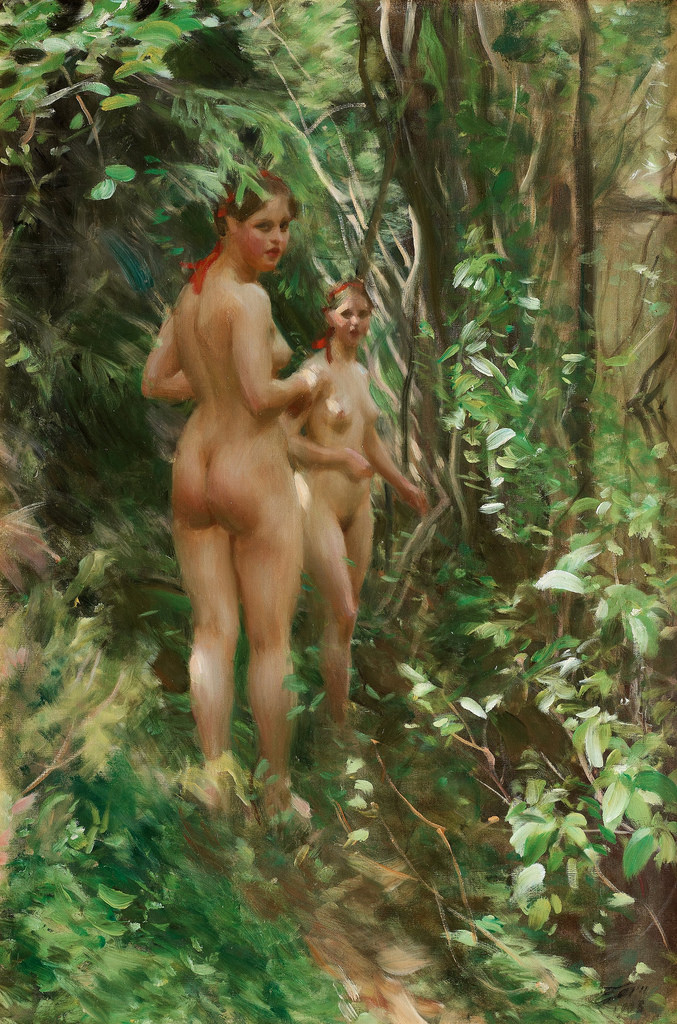
The nudes in Zorn’s paintings were depicted differently. There was a realism about his subjects. The naked women were simply depicted as healthy, ordinary Nordic women who were merely part of nature. A good example of this is his 1908 painting entitled The Hinds.

One of his most beautiful works featuring a female nude is his 1889 painting entitled In Wikströms Studio. At this time Zorn and his wife Emma were living in Montmartre where he had his studio. He and his wife often entertained intellectuals and artists, especially artists from Scandinavia, who, like him, had decided to ply their trade in the French capital. One such artist was the Finnish sculptor, Emil Wikström, and he and Zorn became close friends. The two men shared a fascination for the female nude and the search for the perfect body to paint or sculpt and the two men would often use the same models for their work. The painting, as the title suggests, was painted by Zorn at Wikström studio. The young woman, a veritable beauty with luxuriant red hair and an almost golden skin tone, is seen standing next to a yet-to-be-completed image and is in the process of undressing prior to posing for the artist. There is a sense of unhappiness about the scene as if we believe the young woman has been forced into taking her clothes off. There is also a feeling that we are simply voyeurs and in a way, we are simply spying on the woman unbeknown to her, which adds a touch of both censure and hint of eroticism to the work. Despite her seemingly unaware that she is being watched, we feel that we are standing before the work unable to move, gazing at the woman in total silence in case she detects us.
Zorn was contented with his standard of work and a quote published in Société des Peintres-Graveurs: printmaking, 1889–1897 quoted Zorn:
“…I never spent much time thinking about others’ art. I felt that if I wanted to become something, then I had to go after nature with all my interest and energy, seek what I loved about it, and desire to steal its secret and beauty. I was entitled to become as great as anyone else, and in that branch of art so commanded by me, watercolour painting, I considered myself to have already surpassed all predecessors and contemporaries…”

Anders Zorn in the latter years of the nineteenth century continued with his favoured motifs, portraits including his own self-portraits and nude paintings of women. One such work, entitled Self-portrait with Model, which he completed in 1896, is a juxtaposition of his two favoured motifs. In the work, we see Zorn resting in front of his easel, smoking a cigarette as he takes a short break from his work. His partly dressed model is seen lying slumped in the background. Her eyes are fixed upon him and it is this gaze, which gives us a slight feeling of tension between artist and sitter. An etching derived from this painting was completed by Zorn in 1899 and can be seen at the Isabella Gardner Museum in Boston.
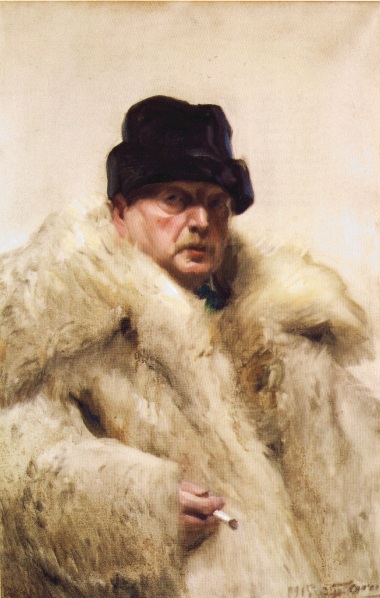
In the early 1900s, Anders Zorn continued with his portraiture and one exceptional example was his Self-portrait in Wolfskin in oils, which he completed in 1915.

Another work of portraiture that is worth a mention is Zorn’s meticulous work entitled A Toast in the Idun Society, which is housed in the National Museum of Stockholm. In this work, we see Harald Wieselgren, an influential intellectual, portrayed as the animated and scholarly speaker. In 1862, Wieselgren was the founder of the Idun Society and throughout his life, he was a leading figure in the Society. The male Idun Society was known for its closed bourgeois atmosphere. Wieselgren was a writer, a librarian at the Royal Library, and for several decades a driving force of the Idun society. This cultural association for men still survives today and since 1885 there has been a female equivalent Society known as Nya Idun.
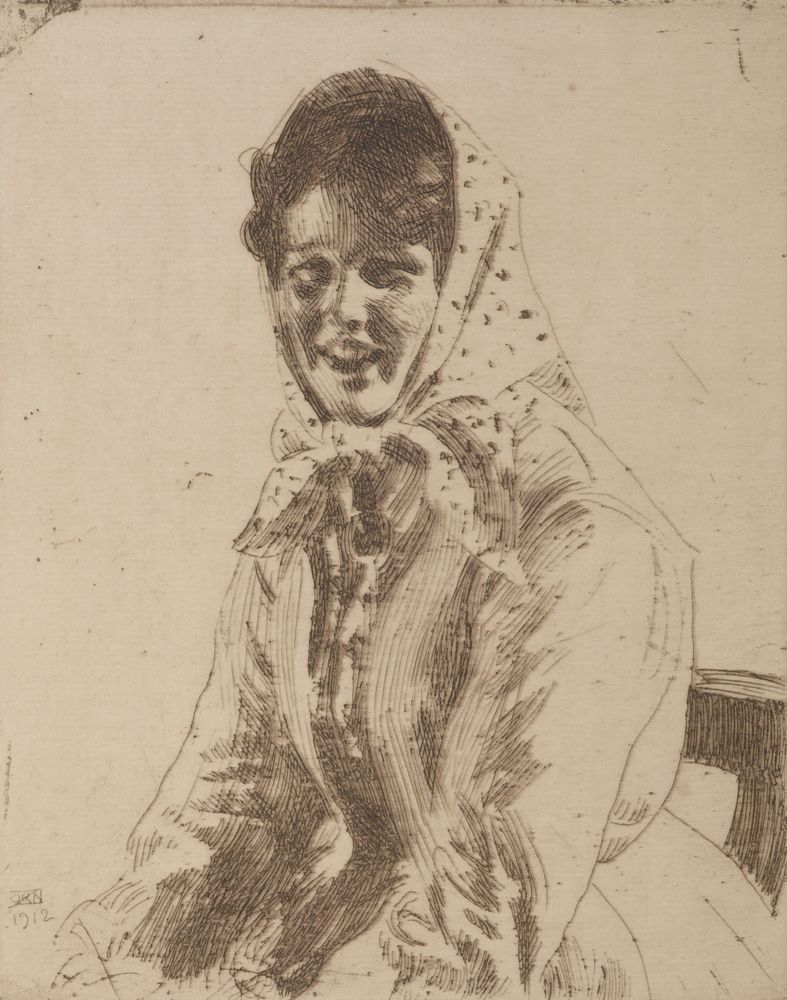
Undoubtedly, Zorn was best known for his paintings but his etchings were extremely popular in their own right. It is said that his etchings realised higher prices than Rembrandts during his lifetime. In total, he completed almost 300 etchings, many of which were associated with his oil and watercolour works. One such is his 1912 etching entitled Skerikulla. The word Skerikulla means “Skeri girl” in the local Mora dialect, which was spoken by Zorn. Zorn’s model for this work was a local girl, Emma Andersson, and Zorn has portrayed her as a happy young woman with a beaming smile. There is a feeling of energy about her demeanour, which we see in the middle of a laugh. It is a tender depiction. Later that year, Zorn also completed an oil painting of Emma.

Another exquisite etching is his 1891 one entitled Girl with a Cigarette II. Such simplicity, such perfection. There are a number of versions of this etching. One can be found at the Met in New York while another is housed in the Art Institute of Chicago.
We often compare portraiture when we consider the talent of various portrait artists. I wonder if portrait artists ever compare their talent against that of fellow portraitists. I consider this possibility having just read an anecdote on The ARTery website with regards the portraiture of Zorn and that of his contemporary John Singer Sargent.

The story goes that in 1897, Edward Rathbone Bacon, a powerful American railway magnate, challenged Anders Zorn to come up with a superior portrait of his sister-in-law, Virginia Purdy, that John Singer Sargent had painted in 1896. The Sargent portrait had Mrs. Walter Rathbone Bacon standing, in a Spanish gown, leaning against a wall. Sargent’s painting is housed at the Biltmore Estate in Asheville, North Carolina.
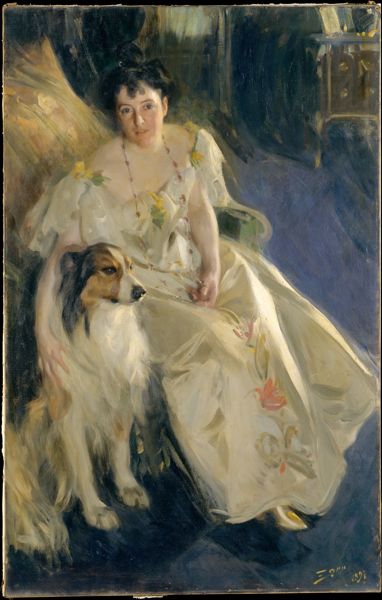
Zorn took up the challenge but chose a more intimate slant. Virginia sat for Zorn in 1897, during one of his visits to America. We see the lady seated indoors wearing a satin gown. It is a masterpiece of fluid brushwork and soft colour harmonies. He depicted his sitter in a moment of unpretentious elegance, as she hugs her collie dog.
So which was the better? Who won the wager? Well, according to Zorn’s memoirs (!) Sargent, on seeing Zorn’s painting at the Paris Salon in 1897, conceded that Zorn’s work was the winner. However what should be taken from this story is the glimpse into the competitive rivalry between two of the great portraitists of their time as they both strived for portrait commissions from the same slice of American Gilded Age high society in the 1880s with its lavishness and high spending elites.

A woman features in another work by Zorn. It is his Night Effect work, which he painted in 1895 and depicts a night time scene featuring a life-sized portrait of a young woman. She is wearing a red dress, (which one believes implies she is engaged in prostitution) and can be seen leaning against a tree, possibly suffering from an excess of alcohol. It is a life-sized depiction measuring 160 x 106cms (63 x 42ins).
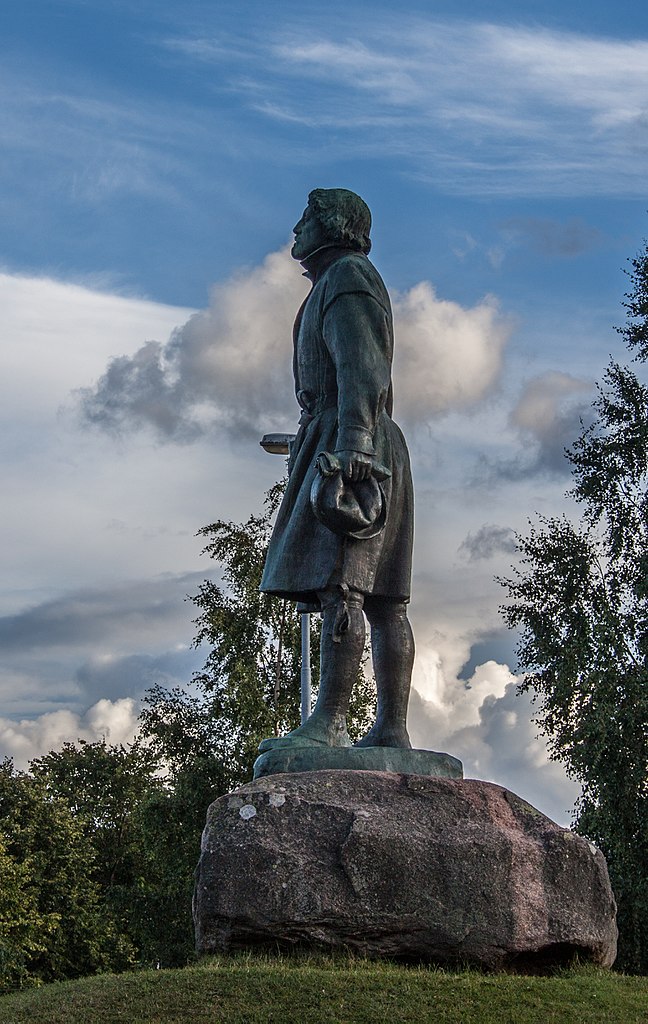
When Zorn grew up, his interest in art was more to do with his love of sculpture before he concentrated on his painting. Maybe the combination of his love of sculpture and his love for his country resulted in one of his most famous creations, the statue of King Gustav Vasa, which Zorn created and was unveiled in 1903 in Zorn’s birthplace and home in the central Swedish county of Dalarna and the town of Mora. Gustav Eriksson of the Vasa noble family was later known as Gustav Vasa. He travelled to the province of Dalarna to rally the peasantry to fight against King Christian II of Denmark, the ruler of the Kalmar Union, a confederation of three countries, Denmark, Norway, and Sweden. In 1523, Gustav Vasa made an impassioned speech to the men of Mora urging them to stand with him against the forces of the Kalmar Union. Gustav lead the rebel movement and his triumphant entry into Stockholm in June 1523 was followed by Sweden’s final secession from the Kalmar Union which was dissolved on June 6th, 1523 and Gustav became King Gustav I of Sweden.

Zorn also sculpted a number of portraits and smaller statues, among them is one known as Morning Bath which he completed in 1909. It is a figure of a girl who holds a sponge in her hands from which a fountain spouts and is situated in front of the home where Zorn used to live.
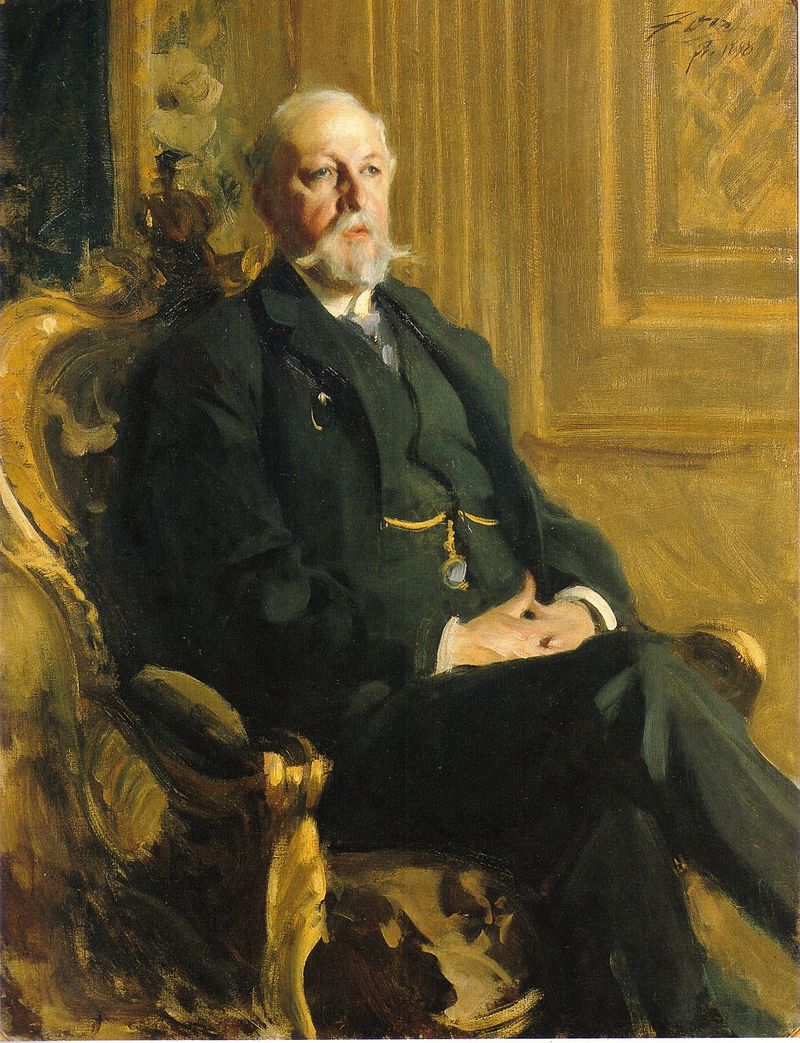
Anders Zorn used the popularity of his art to fund many charities. One example of this was the holding of a small exhibition featuring thirty-five of his works at the Artists Association in Stockholm in the Spring of 1918. The sale of his works at the end of the exhibition raised 12,642 Swedish Krona, which he donated to the Swedish Red Cross. In May that year, he donated twenty thousand Swedish krona to Västmanlands Dalanation. Västmanlands-Dala nation, usually referred to simply as V-Dala, is one of the 13 “Student Nations” at Uppsala University, in Sweden. The “nation”, was intended for students from the provinces of Dalarna and Vastmanland, the former being the area of Zorn’s homeland. On June 6th, 1918, Zorn became Knight Commander of the Northern Pole Star order, first class. The Order of the Polar Star is a Swedish order of chivalry which was created by King Frederick in 1748 and was a reward for Swedish and foreign “civic merits, for devotion to duty, for science, literary, learned and useful works and for new and beneficial institutions”.

Sweden’s most expensive painting ever; sold at 26 million sek on June 3rd, 2010.
During the summer of 1920, Zorn spent much time sailing around the Stockholm archipelago and spending many nights celebrating on the island of Sandheim. However, Zorn was not well and was in constant pain and could not paint during that summer. After the summer sailing was over he returned to Mora, a tired and ailing man. Zorn was rushed to hospital in August 1920 for emergency abdominal treatment and was operated on at Mora hospital. Sadly Zorn had contracted blood poisoning in the lower abdomen and died on August 22nd, 1920, aged 60.

Zorn’s wife Emma lived another twenty-two years, dying on January 4th, 1942. To honour the memory of her husband, she had worked to create a museum, which opened in 1939. She completed the existing collection by re-purchasing a number of paintings that he had sold and at the same time, she continued the philanthropic work that she and her husband had initiated.

The popularity of Anders Zorn’s art during his lifetime made him very wealthy and, over a number of years, he bought the art of his contemporaries and amassed a considerable collection. In their joint will, Anders and Emma Zorn donated their entire holdings to the Swedish State, including their home, Zorngården, which still remains today much as it was at the time of Emma Zorn’s death in 1942.
As usual much of the information I gleaned for the three blogs on Anders Zorn came from many internet websites but one of which is well worth looking at if you want a full and concise biography of this great Swedish artist. The website is:
http://www.alsing.com/zorn_eng/index.html
